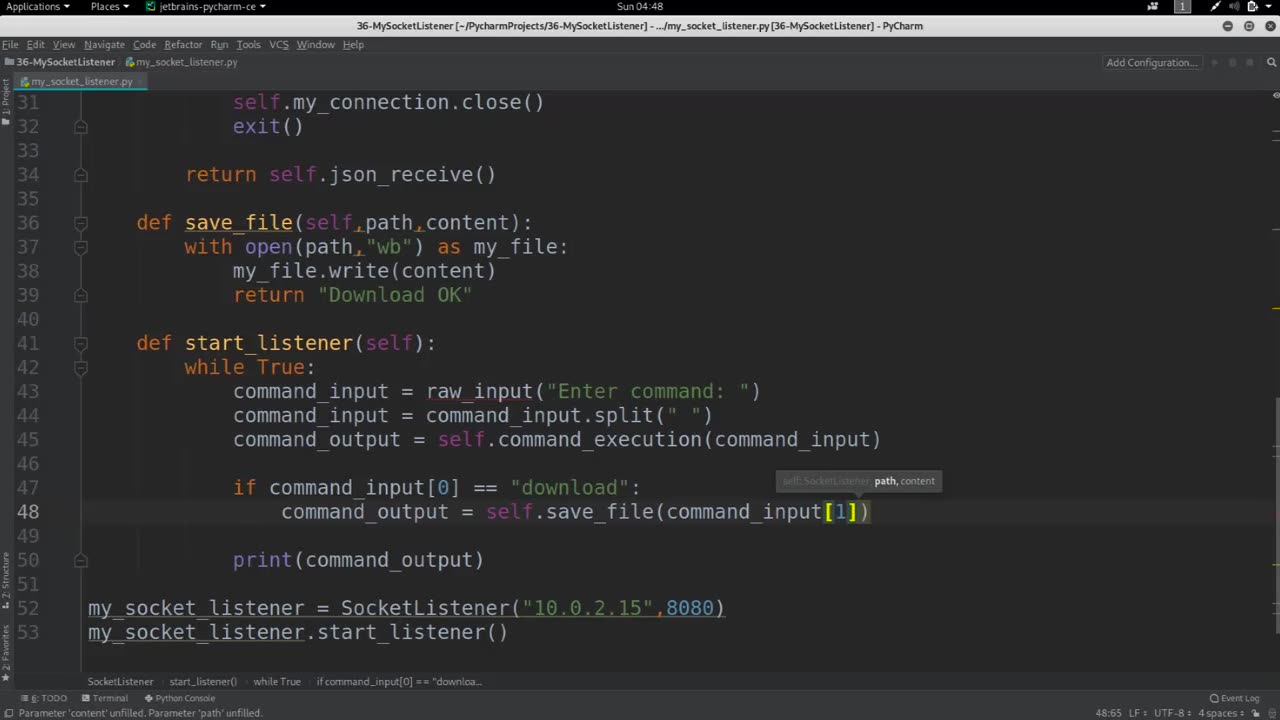Premium Only Content

Chapter-38, LEC-14 | Saving Files | #ethicalhacking #hacking #education
#ethicalhacking #hacking #rumble #virel #trending #education
Subscribe to our channel YouTube channel.❤️
/@thecybersecurityclassroom
Followe me on Rumble.💕
/@the1cybersequrityclassroom
"Saving Files" refers to the process of creating, writing, and storing data into a file on a computer system or a storage device. This process involves several steps to ensure that the data is correctly written and stored in the desired format and location.
Here's a general description of how "Saving Files" can be implemented:
Creating a file: The first step in saving files is creating a new file or opening an existing file for writing. This may involve specifying the file name, location, and desired file format, and creating a file object or file handle in the programming language or operating system being used.
Writing data: Once the file is created, the implementation of "Saving Files" typically involves writing data into the file. This may involve using appropriate methods or functions to write data in the desired format, such as text, binary, or serialized data. The data may be sourced from various input streams or variables, and it may be written sequentially or in chunks depending on the requirements.
Formatting data: Before writing data into the file, the implementation of "Saving Files" may involve formatting the data according to the desired format or structure. This may involve converting data types, encoding data in a specific character encoding or binary format, and arranging data in a structured format such as JSON, XML, CSV, or other custom formats.
Handling errors and exceptions: The implementation of "Saving Files" should include proper error handling and exception management to handle cases where the file writing process fails due to various reasons, such as file permission issues, disk full errors, or data format errors. This may involve checking for error codes, handling exceptions, and providing appropriate error messages or fallback mechanisms.
Closing the file: Once the data is written into the file, the implementation of "Saving Files" typically involves closing the file to ensure that the data is properly saved and the file resources are released. This may involve closing the file object or file handle, flushing any buffers, and committing any changes to disk.
Verifying file integrity: After saving the file, the implementation of "Saving Files" may involve verifying the integrity of the saved file to ensure that the data has been correctly written and stored. This may involve comparing the written data with the original data, performing checksums or hash functions on the file, or performing other validation checks.
Handling file management tasks: Depending on the specific requirements of the task, the implementation of "Saving Files" may involve additional file management tasks, such as setting file permissions, renaming files, moving files to different directories, or deleting files as needed.
The implementation of "Saving Files" can vary depending on the programming language, operating system, and specific requirements of the task. It may involve steps such as creating a file, writing data, formatting data, handling errors, closing the file, verifying file integrity, and handling file management tasks as needed. Proper implementation should include error handling, resource management, and adherence to relevant coding standards or best practices to ensure reliable and secure file saving functionality.
#hacking #growthhacking #biohacking #ethicalhacking #lifehacking #whacking #hackingout #happyhacking #brainhacking #travelhacking #househacking #brainhackingum #hackingtools
#bushwhacking #hacking_or_secutiy #porthacking#porthacking #belajarhacking #hackinginstagram #growthacking #biohackingsecrets #realityhacking #neurohacking #hackingnews #funnelhacking #mindhacking #funnelhackinglive #hackinglife #termuxhacking #learnhacking #bodyhacking #patternhacking #biohackingsuccess #ikeahacking #hackingorsecurity #russianhacking #traumahacking #shackingup #hackinghealth #growthhackingtips #wifihacking
-
 LIVE
LIVE
Scammer Payback
2 hours agoCalling Scammers Live
378 watching -
 43:49
43:49
Stephen Gardner
2 hours ago🔥Congress DROPS Bad News on Newsom and Biden!
18.6K13 -

Twins Pod
2 hours agoHe Left The RAP Industry To Make Christian Music! | Twins Pod - Episode 48 - Bryson Gray
21.8K4 -
 1:30:05
1:30:05
The Quartering
4 hours agoSupreme Court RULES On TikTok Ban, Kamala Harris At Rock Bottom & Brawls Break Out At Costco!
47.6K13 -
 1:36:11
1:36:11
Tucker Carlson
3 hours agoSean Davis: Trump Shooting Update, & the Real Reason Congress Refuses to Investigate
171K82 -
 2:55:32
2:55:32
The Dana Show with Dana Loesch
4 hours agoTHE END OF TIKTOK | The Dana Show LIVE On Rumble!
19.1K5 -
 1:22:57
1:22:57
The Criminal Connection Podcast
5 hours ago $0.41 earnedPADDY DOHERTY: Dougie Joyce RESPONSE! Bare Knuckle Fighting, Sausage Fests & Assassination Attempts
14.7K -
 1:57:23
1:57:23
The Charlie Kirk Show
4 hours agoConfirmation Mania: Day 4 + AMA | Comer | 1.17.2025
153K51 -
 3:30:10
3:30:10
SIEFE
5 hours agoRED DEAD REDEMPTION 2 LIVE!
41K3 -
 2:08:26
2:08:26
Film Threat
18 hours agoWOLF MAN + PETER PAN'S NEVERLAND NIGHTMARE + MORE GORE! | Film Threat Livecast
33.9K